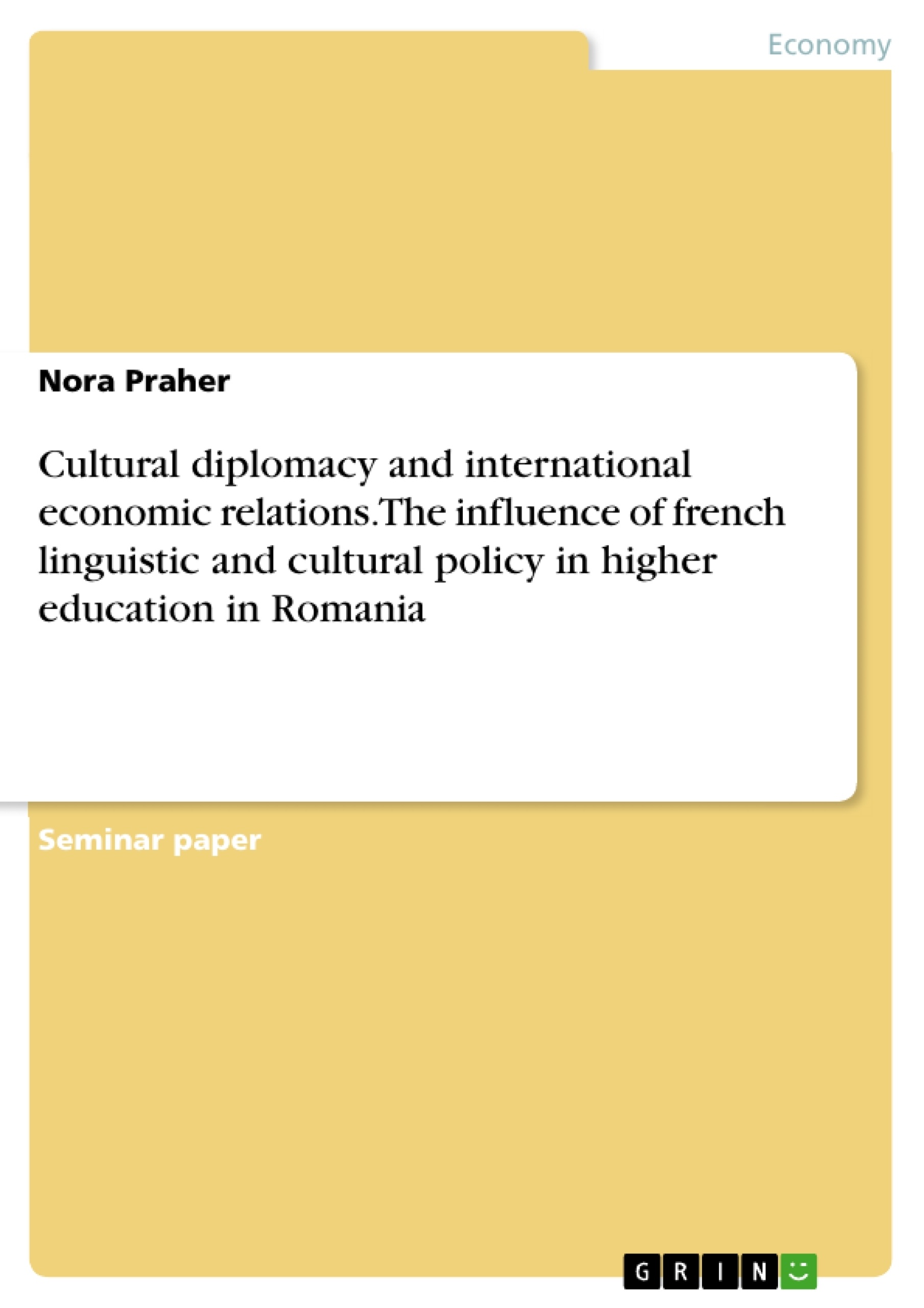Cultural Diplomacy has played a vital part in the history of France’s international relations. In a report to the Chamber of Deputies on the functioning of the newly established educational and cultural institutes in East Europe in 1900, the French deputy Manuel Boucher set the rhetorical question, "What political operation or armed invasion was ever able, with less expenditure, to produce such important results?" (cited in Haigh 1974, p.22). France’s foreign policy in Central and Eastern Europe focused primarily on Poland and Romania. Political and cultural relations to Romania date back until the 18th century and still today Romania remains to be perceived as a strategic partner for France in Eastern Europe. One reason for this is the fact that Romania remains the most francophone European country whose official language is not French.Nearly a quarter of its population (22.44%) is estimated to be francophone and over half of its pupils at primary and lower secondary level study French. This represents the highest quota in a European country in which French has not the status of an official language (Eurostat 2013).Moreover, Romania has a strong affinity towards French culture and very good, long-standing political relations. According to the current Romanian Prime Minister Victor Ponta,it are these sound cultural and political relations which foster bilateral economic relations (Baragan, 2013). This allusion to the correlation of culture and economic collaboration represents the premise of this dissertation. The purpose of this research is to attempt an assessment of the long-term impact of France’s educational and cultural policies in Romania under the concept of Cultural Diplomacy for its economic relations with Romania in the late 20th and early 21st century.
Table of Content
Table of Abbreviations
1.Introduction
1.1.Research question
1.2.Methodology
1.3.Findings
2.Cultural Diplomacy
2.1.Education and educational exchanges as a mean of Cultural Diplomacy
3.Franco-Romanian relations in the 20 th and early 21 st century
4.French Cultural Diplomacy in Romania
4.1.French Cultural Diplomacy in Romania’s education system
5.The impact of French Cultural Diplomacy on language
6.The impact of French Cultural Diplomacy on student mobility
6.1.Analysis of the outbound student body
7.The economic impact of student exchanges
7.1.Scientific co llaboration and its impact on economy
7.2.The Impact of Cultural Diplomacy on Foreign Direct Investment
7.2.1.Analysis of the nature of Foreign Direct Investment in Romania
8.The impact of Cultural Diplomacy on Trade Volume
8.1.Analysis of the volatility of Trade Volume
9.Conclusion
Appendices
Reference list
List of illustrations
-

-

-

-
Upload your own papers! Earn money and win an iPhone X. -

-
Upload your own papers! Earn money and win an iPhone X. -

-
Upload your own papers! Earn money and win an iPhone X. -

-
Upload your own papers! Earn money and win an iPhone X. -

-
Upload your own papers! Earn money and win an iPhone X. -

-
Upload your own papers! Earn money and win an iPhone X. -

-
Upload your own papers! Earn money and win an iPhone X. -

-
Upload your own papers! Earn money and win an iPhone X. -

-
Upload your own papers! Earn money and win an iPhone X. -

-
Upload your own papers! Earn money and win an iPhone X. -

-
Upload your own papers! Earn money and win an iPhone X.

